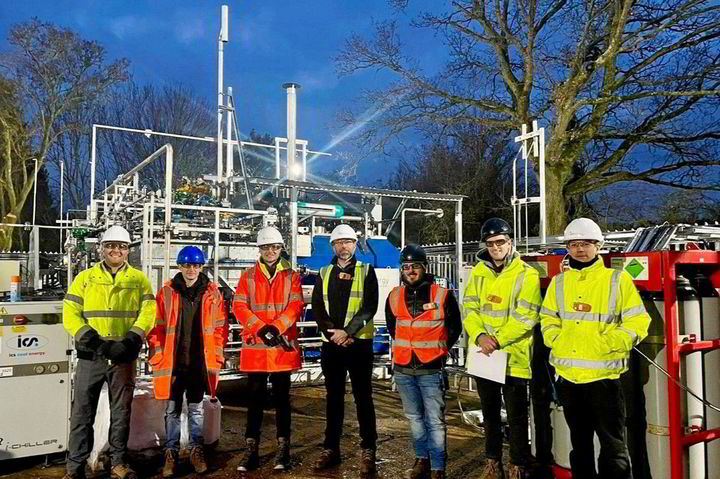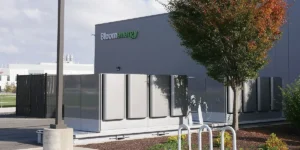World’s largest ammonia-to-hydrogen cracking pilot starts up in UK

Green hydrogen technology company AFC Energy has started up an ammonia cracker in the UK capable of supplying 400kg of hydrogen a day — the world’s largest demonstration project to date.
The facility currently converts imported grey ammonia supplied by chemicals firm OCI’s Port of Rotterdam terminal — originally produced in the US, Middle East and North Africa, where gas prices are much lower than in Europe — to H2.
While AFC Energy is unwilling to provide details on the system’s efficiency and how much the final delivered hydrogen costs in these early days of the demonstration project, a spokesperson tells Hydrogen Insight that its modelling suggests that cracking imports of low-cost NH3 could still be cheaper than producing H2 within the UK.
AFC Energy also plans to start using green ammonia “for the next stage of the project”, although a timeline for when this will take place and the likely impact of using a higher-price feedstock on the final cost of delivered hydrogen is as-yet unclear.
Many developers around the world are planning to build green H2 production facilities where renewable electricity is cheapest, add nitrogen from the air to make green ammonia, and ship that to demand centres overseas, particularly in Europe and Asia.
Although hydrogen can be shipped directly as a gas or a liquid, the space requirements for both these options — and in the latter’s case, the need to keep it cooled to minus 253°C in specialised storage tanks — have led to interest in “carrier” molecules, which could be converted back to H2 at point of use.
Article continues below the advert
Ammonia, which actually contains more hydrogen by volume than even liquid H2, is by far the most popular option.
For instance, the largest green H2 project to take a final investment decision to date, the 2.2GW Neom complex, is set to supply 1.2 million tonnes of NH3 a year to Air Products, which plans to then crack it back to hydrogen for use in transport and industry.
However, cost-effectively cracking ammonia back to hydrogen is the biggest hurdle for these projects to clear. Numbers from the Clean Air Task Force earlier this year indicated that converting NH3 to H2 in European ports would push up the cost of the final molecule by 40-50% compared to using ammonia directly.
Clean ammonia could be used directly to decarbonise the existing NH3 market or in some new uses such as maritime fuel and power generation.
But other applications — such as road transport and metalworks — will likely use hydrogen over ammonia, either due to poor results in trials or safety concerns when it comes to increased public contact with NH3, a hazardous chemical which can cause severe injury or death.
AFC Energy, which also supplies fuel cells for small-scale power generation, launched its first ammonia cracker in March this year following two years of testing, with an eye towards commercial deployments starting in 2025.
The company has also been developing new cracking technology to improve the purity of hydroen and remove trace amounts of ammonia, which can damage fuel cells.
While the demonstration plant targets 99.97% purity — the ISO standard for use in fuel cells — AFC Energy in October announced its new technology had successfully produced 99.99% pure hydrogen from ammonia. The company has said it will retrofit this technology into the pilot next year.
AFC Energy also plans to engineer a containerised version of the ammonia cracker from 2024 to sell into European and Asian markets.
While the company notes that its existing customers for fuel-cell generators, designed for small-scale power generation, could be a market for hydrogen produced from ammonia at its demonstration plant, the spokesperson clarifies to Hydrogen Insight that this demand is currently “capable of being met by local hydrogen producers in the UK”.
However, the hydrogen technology firm expects that its joint venture with construction equipment supplier Speedy will scale up the sales of these generators, increasing demand for long-term, large-volume offtake from “either industrial gas groups or potentially AFC Energy’s own ammonia cracker systems”.




